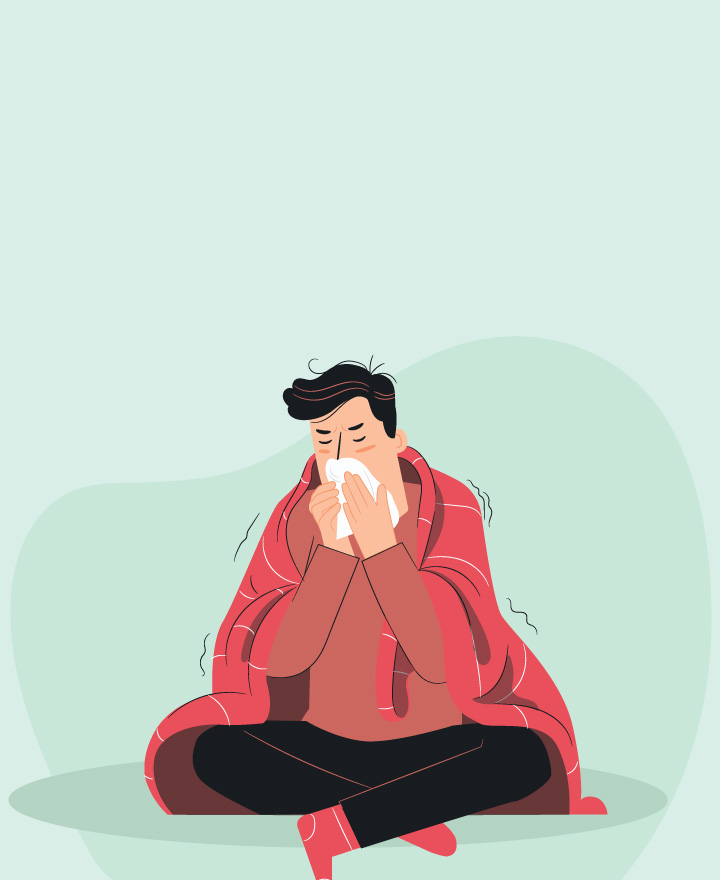

What Are Types of Tuberculosis?
Tuberculosis (TB) has various types, each requiring unique diagnostic and treatment strategies. Common types include pulmonary TB, which causes cough and weight loss, and extra-pulmonary TB, which affects lymph nodes, bones, joints, bloodstream, and other areas. Diagnosis involves imaging tests and biopsies, while treatment involves antibiotic courses and surgery.
Types of Tuberculosis
There are different types of tuberculosis, ranging from pulmonary TB to extra-pulmonary TB. Each type of tuberculosis presents unique challenges and requires different treatment approach.
A) Pulmonary Tuberculosis
Pulmonary TB primarily affects the lungs and it is the most common prevalent form of the disease.
Symptoms:
Common symptoms include:
• persistent cough
• chest pain
• coughing up blood
• fatigue
• weight loss
Diagnosis:
Chest X-rays, sputum tests, and physical examinations.
Treatment:
The line of treatment includes administering antibiotics over an extended period to eradicate the bacteria.
B) Extra-pulmonary Tuberculosis
This type of tuberculosis affects organs other than the lungs and can occur in various parts of the body. These are:
1) Lymphadenitis Tuberculosis
TB lymphadenitis affects the lymph nodes and is characterized by neck, armpit, or groin swelling.
Symptoms:
• swollen lymph nodes
• fever
• night sweats
Diagnosis:
Fine needle aspiration biopsy, imaging tests like CT scans or ultrasounds.
Treatment:
Administration of Antibiotics, and sometimes even surgical drainage, if needed.
2) Skeletal Tuberculosis
Skeletal TB affects the bones and joints, causing pain and deformity.
Symptoms:
• bone pain
• joint swelling
• spinal deformities
Diagnosis:
Imaging tests such as X-rays, CT scans, MRI scans, and biopsy.
Treatment:
Antibiotics, and sometimes surgery for advanced cases.
3) Miliary Tuberculosis
Miliary TB is a severe form where bacteria spread through the bloodstream, affecting multiple organs.
Symptoms:
• fever
• fatigue
• weight loss
• difficulty breathing
Diagnosis:
Chest X-rays, CT scans, blood tests, and sometimes biopsy.
Treatment:
Aggressive antibiotic therapy tailored to individual cases.
4) Genitourinary Tuberculosis
Genitourinary TB affects the kidneys, bladder, and reproductive organs.
Symptoms:
• Blood in urine
• flank pain
• frequent urination
Diagnosis:
Urine tests, imaging tests like CT scans or ultrasounds, and biopsy if necessary.
Treatment:
Antibiotics are taken for an extended period, and sometimes surgery is required for complications.
5) Liver Tuberculosis
Liver TB affects the liver, often due to spread from elsewhere in the body.
Symptoms:
• abdominal pain
• jaundice
• fatigue
Diagnosis:
Imaging tests like CT scans or ultrasounds, liver function tests, and sometimes biopsy.
Treatment:
Antibiotics along with supportive care for liver function.
6) Gastrointestinal Tuberculosis
Gastrointestinal TB affects the digestive system, including the stomach and intestines.
Symptoms:
• abdominal pain
• diarrhea
• bloody stools
• nausea
• weight loss
Diagnosis:
Imaging tests like CT scans or endoscopy and biopsy if necessary.
Treatment:
Antibiotics and sometimes surgery for complications like bowel obstruction.
Conclusion
Understanding different types of tuberculosis is crucial for timely intervention and management, as early detection and appropriate treatment can significantly improve outcomes.
One of the important components of our overall wellness is also being financially secured. Healthcare emergencies can happen any time, but a good health insurance policy can protect you from such uncertain situations. To know more about Wellness and other health related tips, visit the wellness corner.
Source: healthline.com, pharmeasy.in, wikipedia.org
Disclaimer: This blog provides general information and discussions about health and related subjects. The information and other content provided in this blog, website or in any linked materials are not intended and should not be considered, or used as a substitute for, medical advice, diagnosis or treatment. Kindly contact your Doctor before starting a new medicine or health regime.
Related Articles
The Best Ways to Prevent Infections
Understanding Lung Cancer Causes
Tips to Keep Your Lungs Healthy and Whole
Chronic obstructive pulmonary disease (COPD)
What is Pneumonia- Symptoms & Causes
Published on May 21, 2024














 Health Insurance
Health Insurance  Travel Insurance
Travel Insurance  Car Insurance
Car Insurance  Cyber Insurance
Cyber Insurance  Critical Illness Insurance
Critical Illness Insurance
 Pet Insurance
Pet Insurance
 Bike/Two Wheeler Insurance
Bike/Two Wheeler Insurance  Home Insurance
Home Insurance  Third Party Vehicle Ins.
Third Party Vehicle Ins.  Tractor Insurance
Tractor Insurance  Goods Carrying Vehicle Ins.
Goods Carrying Vehicle Ins.  Passenger Carrying Vehicle Ins.
Passenger Carrying Vehicle Ins.  Compulsory Personal Accident Insurance
Compulsory Personal Accident Insurance  Travel Insurance
Travel Insurance  Rural
Rural